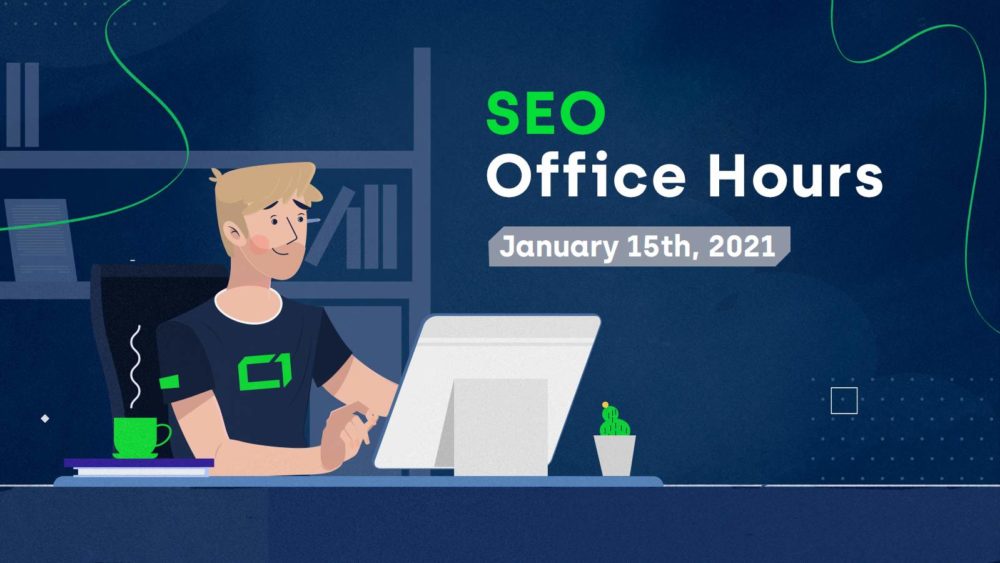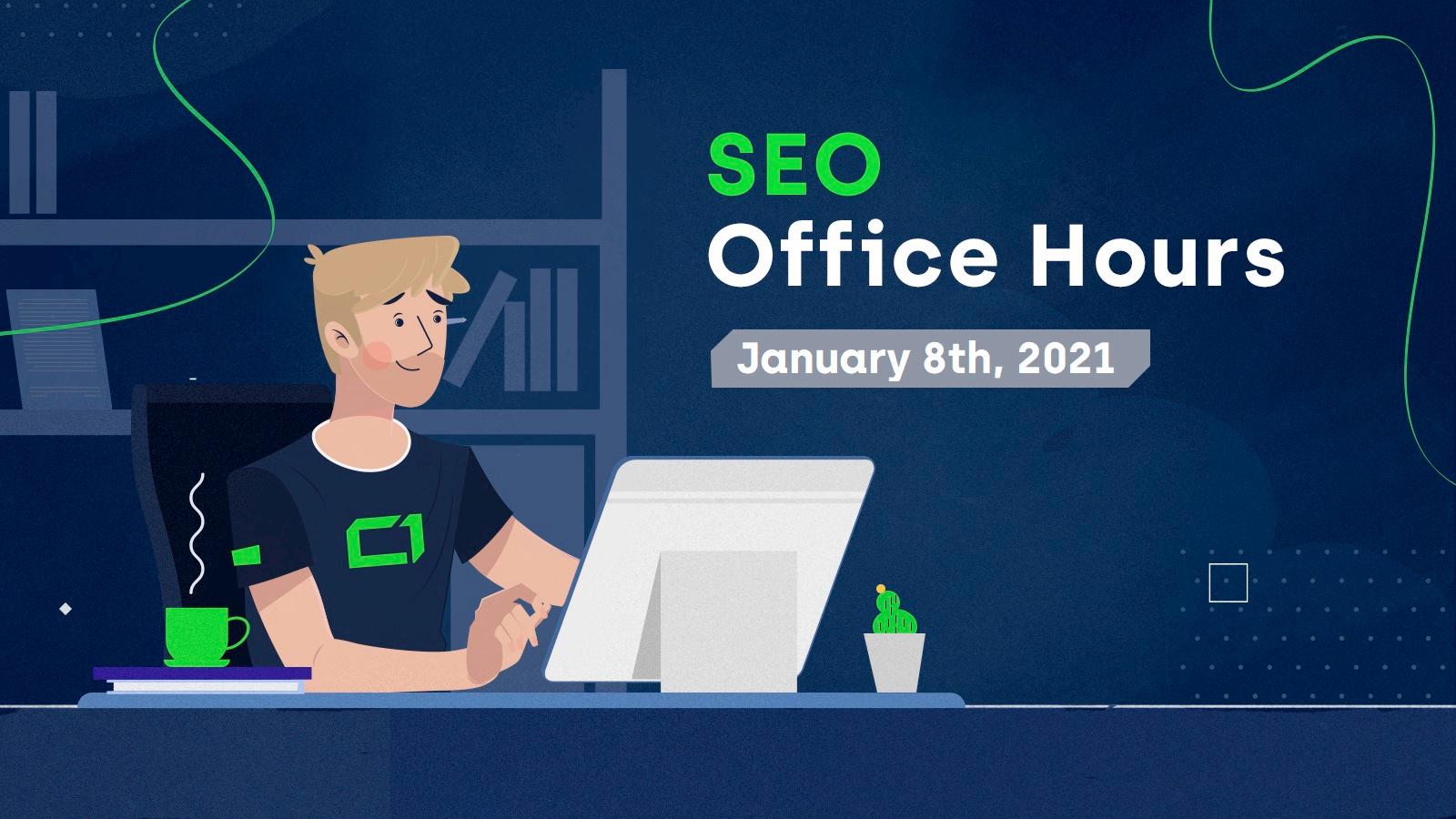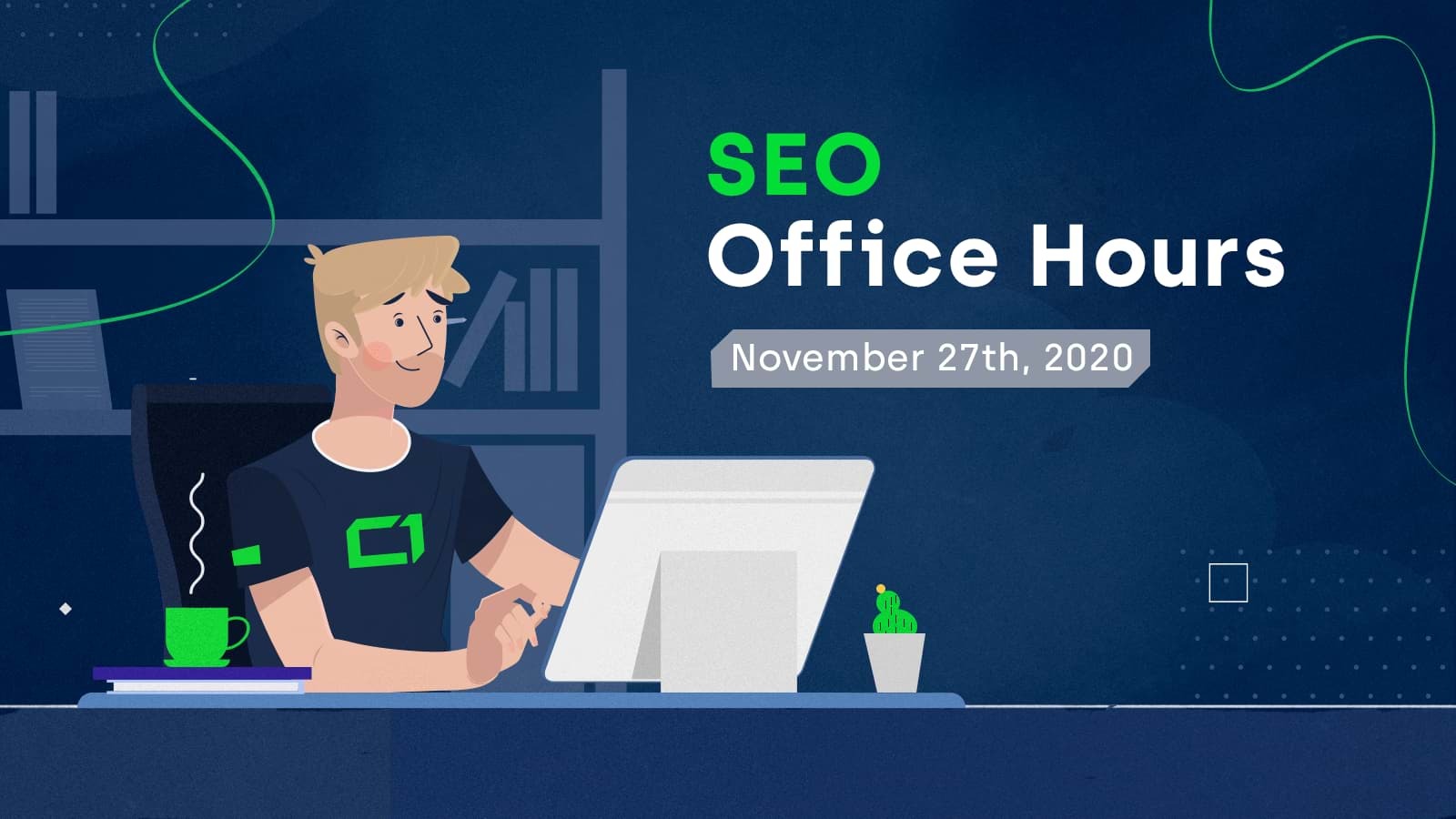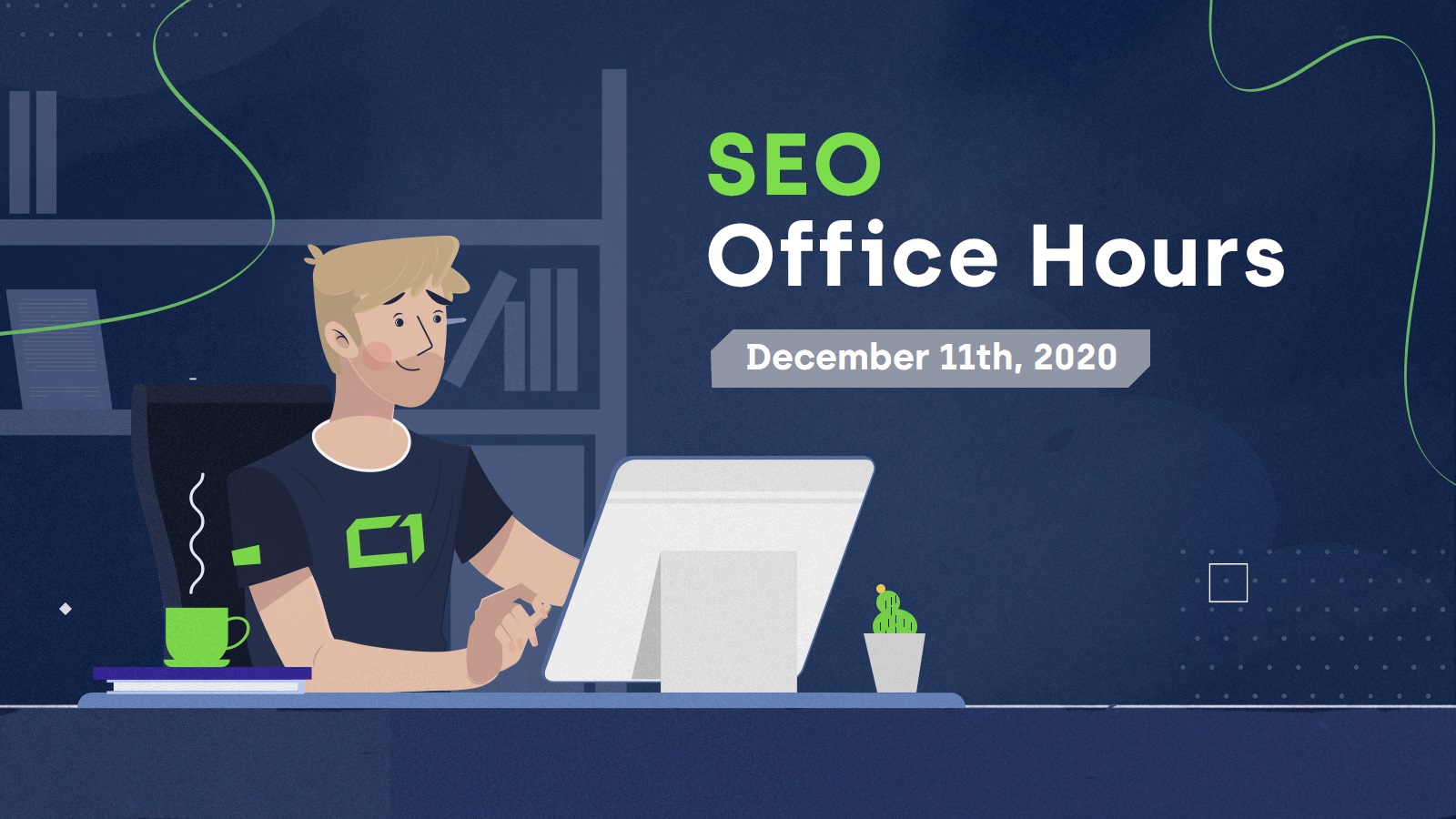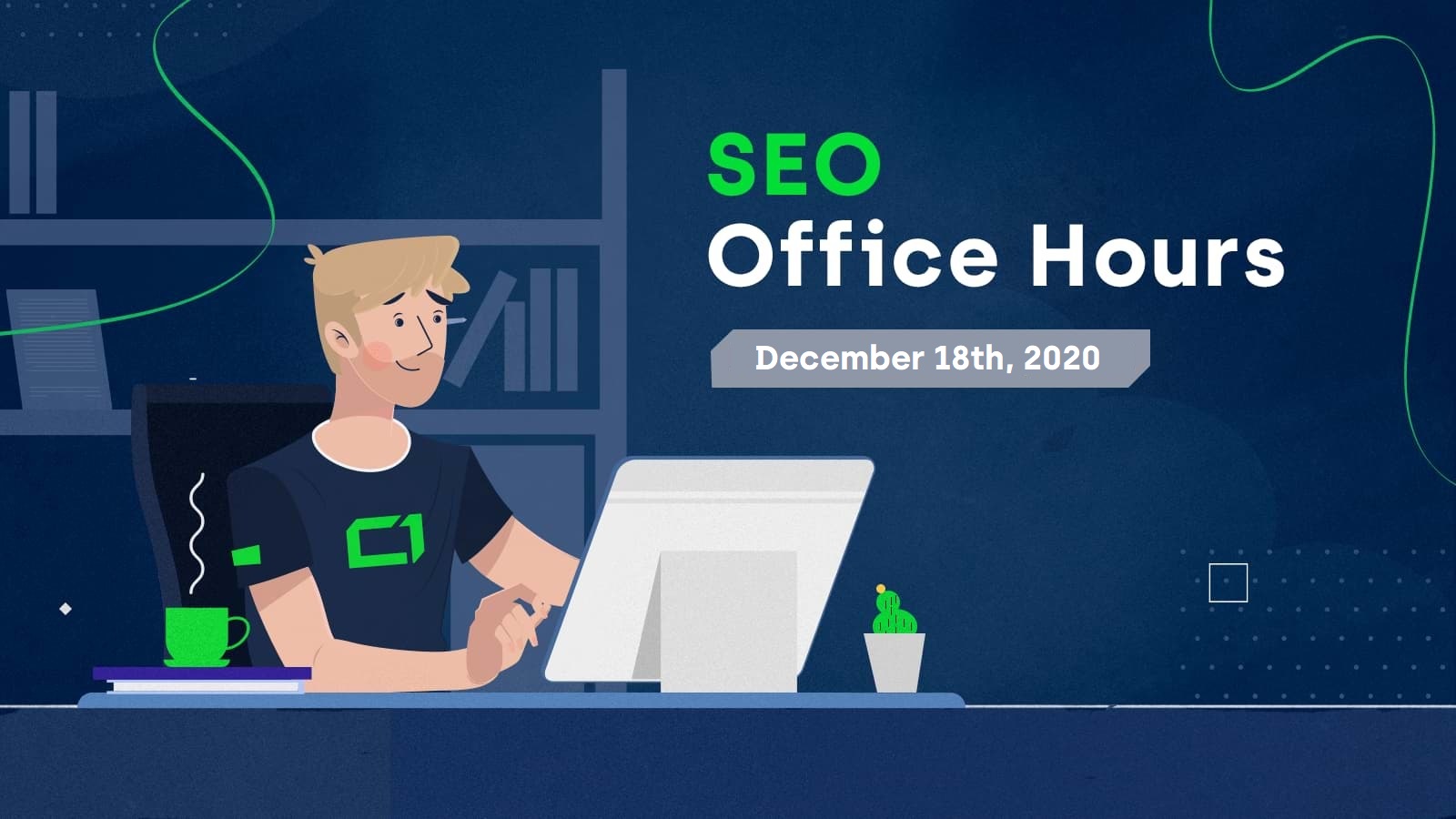This is a summary of the most interesting questions and answers from the Google SEO Office Hours with John Mueller on January 15th, 2021.
Low-quality websites cluttering the search results
0:34 – What can you do if there’s a low-quality website that keeps showing up on “prominent” positions and redirects you to irrelevant content once you follow the link?
John said that there might be two things going on:
- it’s just low-quality content ranking in top positions, which is debatable and subjective,
- It’s a page that redirects you to malware or phishing content, which can be reported via appropriate channels and should result in a manual action from the webspam team.
Multiple ccTLDs or subfolders?
6:35 – A large structure with multiple websites targeting different countries on different domains is rethinking whether to stay using multiple ccTLDs and target each country with a separate domain, or switch to using a generic domain with subfolders targeting specific countries.
John said that for Google, both these approaches are valid. There’s no SEO advantage for using either ccTLDs or subfolders.
He also said that whatever the decision is, making such a substantial change in your structure will result in ranking fluctuations, so it’s best to make a decision that you’ll want to stick with for years to come. Moreover, if possible, you should migrate when there’s less interest in your domain (because of seasonality, for instance)
Find out more about how to target multiple countries with our international SEO strategy guide.
Does Page Experience roll out globally in May?
19:27 – Google announced that in May 2021, the Page Experience Update would be rolled out, making Web Vitals such as LCP, FID, and CLS part of the ranking algorithm. But is the May rollout global, or will some countries be affected with a delay?
John said that as far as he understands, the rollout is global. There’s no big reason no to roll it out on a global scale because the data is there.
When it comes to experiments Google may conduct beforehand, John wasn’t sure. Google may test using badges in search results that will either inform users that a particular page offers a good Page Experience, or that it doesn’t pass the threshold. According to John, these tests may take a while because badging pages like that is complicated – whenever Google makes visual changes to the search results, there are multiple tests to see if users can understand the visual difference.
Optimizing for synonyms
21:05 – What to do if Google doesn’t understand that some of the keywords you’re targeting are synonymous? In this particular case, the website is targeting “camper van rentals,” but users sometimes use “campervan rentals” instead, and there’s a big difference in how the website ranks for those two terms. Meanwhile, their competitor gets consistently high results for both those keywords.
John said that Google’s systems might not always pick up on two keywords being synonymous. As more data comes in, Google may understand that the users searching for these two terms are essentially looking for the same thing, so this situation might change in the future.
For now, John suggested that targeting both of these variants on your website might be a good idea if there’s a lot of people using the alternate spelling. This strategy is more and more a thing of the past, but when Google’s algorithms fail, it might be the way to go.
Infinite scroll and History API
34:33 – When your website has infinite scroll implemented, is using the History API enough for Google to properly process the content, or should you implement proper paginated links?
John said that paginated links are very important for Google because it allows Google to crawl and index paginated links separately.
The problem with just using the History API and infinite scroll is that Googlebot doesn’t perform any actions other than following proper links. For History API to produce a proper link that can be separately crawled, a user needs to perform a certain action, and Googlebot doesn’t browse like a regular user. John also said that sometimes it might be okay if Google doesn’t pick up the content hidden behind infinite scroll – for instance, when it leads to content that Google could pick up elsewhere.
So, never hide unique content behind a user interaction – Googlebot doesn’t click or scroll!
Dofollow backlinks from paid blog posts
48:28 – If you pay bloggers to write high-quality review articles or PR news articles and they put a dofollow link to your website inside the articles, is that against Google’s guidelines? Are they paid links?
John clearly stated that these are paid links and go against the guidelines. If these links were nofollow, or they had the rel=”sponsored” attribute, that would be different. But dofollow links that you pay for are… paid links.

Hi! I’m Bartosz, founder and Head of Innovation @ Onely. Thank you for trusting us with your valuable time and I hope that you found the answers to your questions in this blogpost.
In case you are still wondering how to exactly move forward with your organic growth – check out our services page and schedule a free discovery call where we will do all the heavylifting for you.
Hope to talk to you soon!
